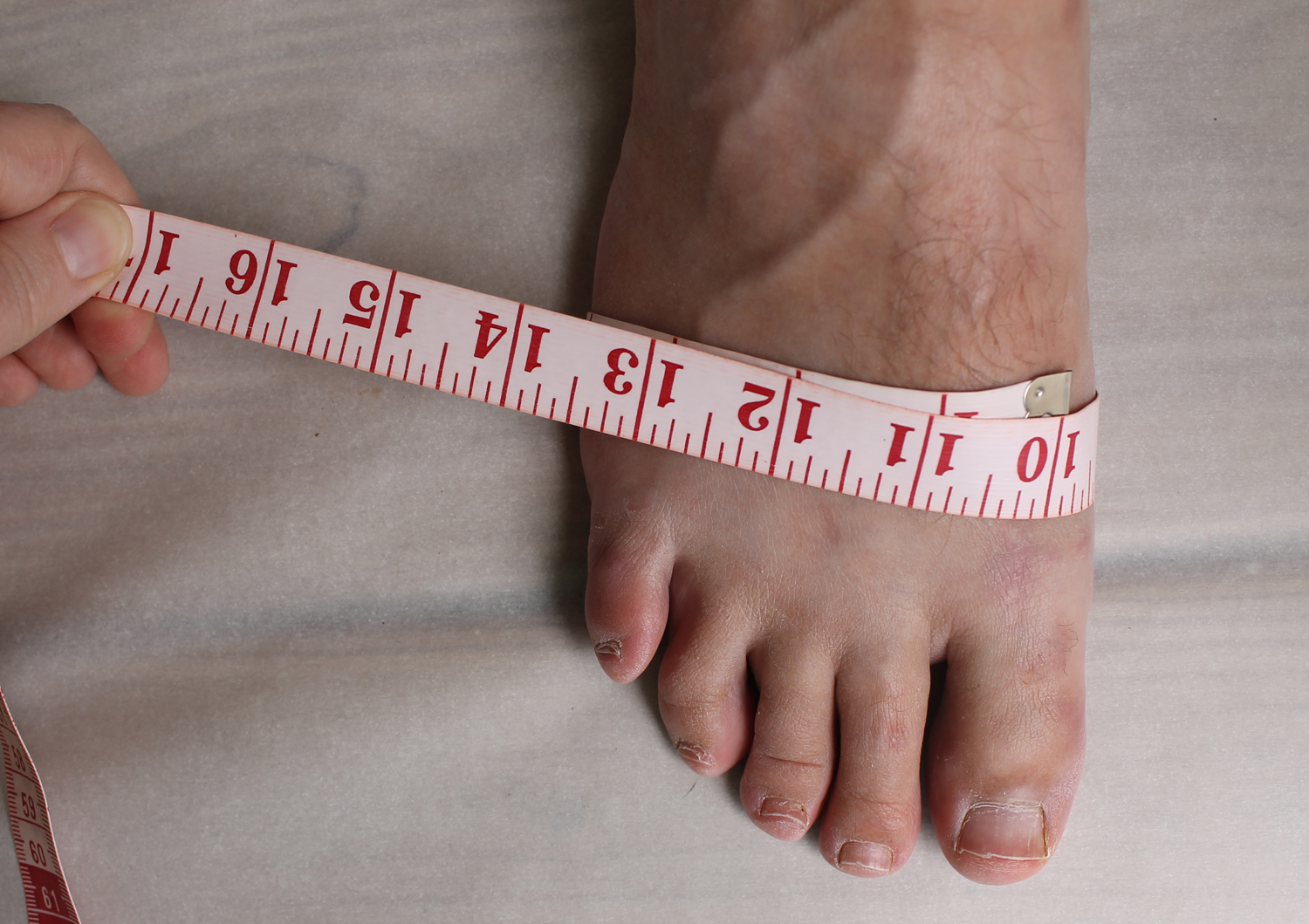How to Measure Foot Circumference for Knitting Socks
The Right Way to Measure Your Foot for Perfectly Fitting Socks
Have you ever knit a sock that sagged and fell down around your ankles? Or one that was so tight that it left marks on your foot? If you learn how to measure your foot the right way and compare it to the pattern sizing, this will never happen again!

Hint: If you're knitting socks as a surprise, you can uncover some measurements (like cuff length and foot length) by measuring the recipient's favorite pair of socks!
How sock sizing works
Most sock patterns use sizing based on the foot circumference. But that isn't the only part of the foot you'll need to measure to get a good fit. There are all kinds of other measurement customization options — like cuff length and foot length — that also factor into a great-fitting sock.
A note about negative ease
Most of the time, a bit of positive ease is a good thing in knitting. Positive ease is when the knitting is sized a bit larger than your actual measurements. In sweaters, for instance, the more positive ease, the looser the garment.
With socks, though, positive ease isn't a good thing. If socks have positive ease, they slip off our feet. Positive ease causes shoes to eat socks, and it causes socks to ball up in the back around the heel. All of these fit issues are so annoying!
To solve this problem, keep in mind that you want your socks to have negative ease. In other words, you want that sock to stretch out just a little to get a good fit. This helps the sock stay put on your foot. It also helps prevent socks from drooping down around your ankles.
Foot measurements you need to know
Foot circumference
This measurement helps you determine if the number of stitches around the foot will result in a sock that's too large or too small.
Grab a tape measure. (Don't try to measure with a ruler. We need to wrap the tape around the foot, so a tape measure is the best tool.)

Measure around the widest part of your foot, which is usually the ball of the foot near your toes. To get a true measurement, I like to wrap the tape measure under the foot, then have my model (my husband, in this case) plant their foot on the ground. When we're wearing socks, we're usually walking around, so this will give a true measurement.
If your lucky sock wearer has any kind of swelling or bunions, don't include these in the measurements. These can cause the circumference of the foot to increase, so you don't want to take them into account.
Pull taut on the tape measure, but don't pull too tightly or too loosely. You want a true representation of the foot's measurement. You can see in the photo above that my husband's foot circumference is 10 inches around.
Cuff height
This measurement depends on the wearer's preference. The Craft Yarn Council has determined sock height for crew-style socks, so check their Foot Size Chart if you are going by the book.
Otherwise, ask your lucky sock recipient to give you an idea of where they like their cuff, or just measure a pair of socks they already own.

To determine the height of the sock, measure from where you start to turn for the heel shaping to the top of the sock. You can ask the wearer where they'd like the cuff, if you're customizing the sock to their needs.
Foot length
The foot length is possibly the easiest part of the sock pattern to customize. To measure the total length of your foot:

Place a tape measure on the floor. Position the back of the heel at the zero mark on the tape, then measure to the longest toe.
As with the foot circumference, make sure the sock wearer's foot is planted on the ground so you can get an accurate measurement.
For some of us, including my husband, the second toe is longer than the big toe, so that's where we'll measure to. His foot length is 10″.
Customizing the sock pattern based on your measurements
Once you have all these measurements, compare the foot circumference to the sock pattern fit and gauge. You may need to adjust the number of stitches to get the negative ease you'll need in the foot circumference, increasing the stitches if your foot is larger than the pattern measurements and decreasing them if your foot is smaller.
Still have questions about knitting socks? Check out Ann Budd's class Essential Skills for Sock Knitting. Ann covers measuring your foot in the first section, and there are plenty of other tips to learn from cast ons to different types of heel and toe shaping.
Do you have any tips for getting a good sock fit?
How to Measure Foot Circumference for Knitting Socks
Source: https://www.craftsy.com/post/how-to-measure-your-foot/